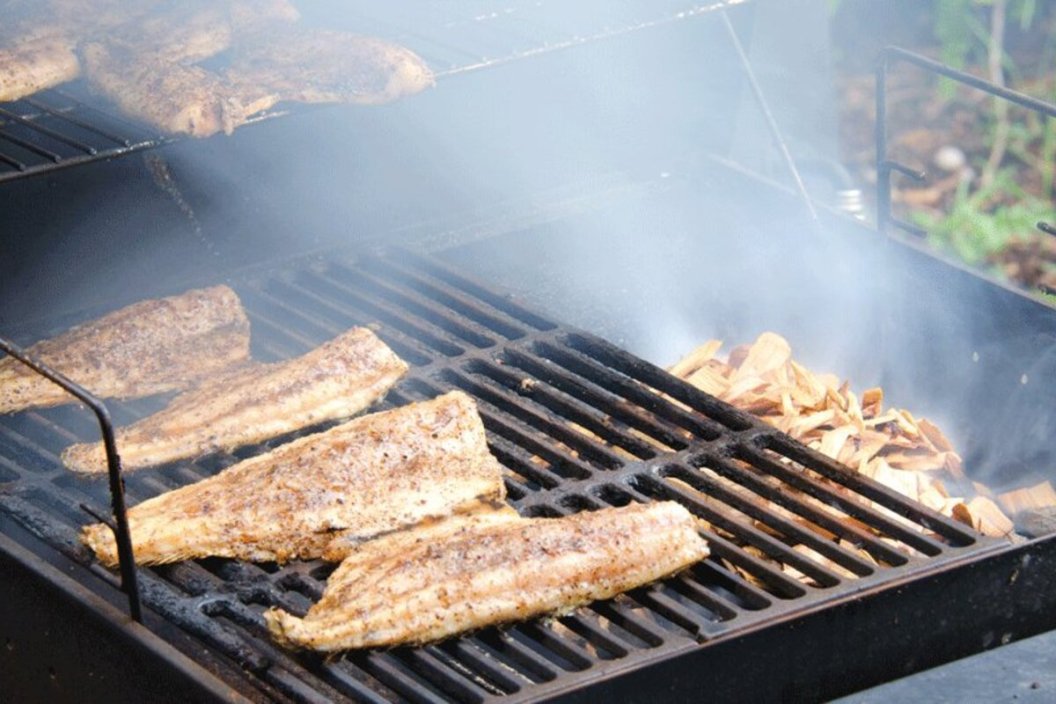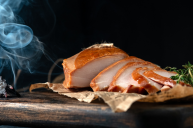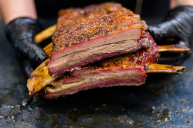Once upon a time, all food was cooked over a fire. The smoke from the wood flavored the meat, giving it a sweet and smoky characteristic. Flash forward to today, where we cook most of our food over electric or natural gas stoves. We haven't forgotten about our humble beginnings, though - we still respect barbecue and the powerful flavor that comes from using wood for smoking meat.
The smoke is what makes barbecue so iconic. While any type of wood works to infuse smoke flavor into your food, each type adds a unique flavor profile and aromatic element to your food. Not all smoke is created equally, and some smokes are better suited for certain meats and big game. So let's take a look at the unique characteristics of each fuel source.
Get to Know Your Woods for Smoking

Smoking wood plays a role in the flavor and the color of the meat. It also forms a bark, or crust, on the meat. In general, mild woods are good for fish and poultry, medium fruit woods are best for poultry, or pork, and strong woods hold up against dark red meat flavors. The wood often comes as wood chunks, wood chips, or pellets-wood chunks allow a steady, slow release of smoke, while wood chips and pellets are quicker to smoke.
In the end, you don't need to overly obsess about which wood you use for smoking. At my house, we usually smoke with apple wood because it's good for almost anything and it's the best wood for the job at hand.
Sometimes I'll mix and match small amounts, but I usually make amazing barbecue just using apple. The apple wood is so mild and all-purpose, it never takes over the meat, which allows the meat's natural flavors to shine. But, if you want to experiment, here's the lowdown on each wood and which meats each is best for.
A Quick Note about Hardwoods and Softwoods
Hardwoods (also known as deciduous trees) include fruit and nut woods. Their cell structures are compact, making them ideal for being a smoking wood. Softwoods (evergreen or coniferous trees) include pine, spruce, fir, hemlock, redwood and cypress. These are airy woods that have more sap, making them pungent and fast burning. They're not recommended for cooking.
Mild Woods for Smoking
Alder
Alder has a subtle smoke flavor with a natural sweetness. This lighter wood is my first choice for smoking salmon, but it's great choice for any fish. It can also be used for poultry.
Try it with this smoked salmon recipe.
Maple
This wood imparts a mild and sweet flavor to your food, making it a popular choice for poultry, vegetables and cheese. Maple's sweet smoke also gives the meat a dark appearance. Great when mixed with different woods such as oak, apple or alder.
Try this recipe for maple smoked chicken.
Medium Woods for Smoking
Apple
This fruitwood is mild, fruity and subtly sweet. It is my go-to choice for all-purpose smoking needs. It's particularly popular with poultry, pork (especially ham), lamb and sometimes seafood. It works for beef, but its flavor is so delicate it doesn't hold up to red meat's heavy flavors so a lighter wood is recommended.
This is a great blending wood when mixed with stronger woods, like oak or mesquite.
Check out this applewood smoked chicken recipe.
Cherry
Cherry is another great all-purpose fruitwood for all types of meat. Its sweet and mild flavor works well with beef or pork, and the smoke turns meat a rich, mahogany color. This smoking wood mixes well with hickory, oak, pecan or alder.
Try cherry wood with this recipe for smoked duck.
Oak
A stronger wood than apple or cherry, but lighter than mesquite or hickory. Oak burns very hot, making it a great blending wood and very versatile. It imparts a medium smoky flavor that works well with any type of meat.
This recipe for oak smoked prime rib is a great way to check out the power of oak.
Peach & Pear
These fruitwoods are very similar to each other. They have light, sweet, and fruity flavors that make them ideal for pork or poultry. These types of woods are harder to find but their subtle flavor is worth the search.
Try this recipe for peach wood smoked turkey breast.
Strong Woods for Smoking
Hickory
This popular wood for smoking is a Midwest and Southern barbecue favorite. It's so strongly associated with bacon that some people say that hickory-smoked food reminds them of bacon!
It has a strong, pungent smoke that adds strong sweet and smoky flavors to meat. It's especially popular with bacon and pork ribs. Be careful with this wood, because over-smoking with hickory wood causes aggressive, bitter tasting foods.
Check out this recipe for hickory smoked pork ribs.
Pecan
Pecan wood is actually part of the hickory family. While the wood flavor is not as strong as hickory (although stronger than fruitwood), it belongs in the strong wood category because it can become pungent and bitter if used in excess.
The wood burns cool and imparts a delicate flavor to meats when used properly, making it choice for poultry or pork.
Try smoking with pecan with this bacon recipe.
Walnut
Walnut is often used as a mixing wood for smoking because of its tendency to impart strong, bitter flavors to meat. Because it has such a strong flavor, it's ideal for red meats or game meats.
Try using walnut in this recipe for smoked venison.
Strongest Woods for Smoking
Mesquite
This wood for smoking is in a category of its own. It can be harsh and bitter if used incorrectly, but strong and have an earthy flavor if used correctly.
It is an oily wood so it burns strong, hot, and fast. Since it burns so fast, it's not ideal for long barbecues. It's extremely strong flavor holds up well to dark meats, but it would be a terrible choice for lighter poultry or fish.
Blending this wood is definitely recommended to get until you get to know how it works.
Swap in mesquite wood to cook up a real classic Texas Brisket with this recipe.
It's official - all this talk of wood is making me hungry! I'm ready to fire up the smoker, call myself a pit master and throw a party.
This article was originally published on March 27, 2018.













